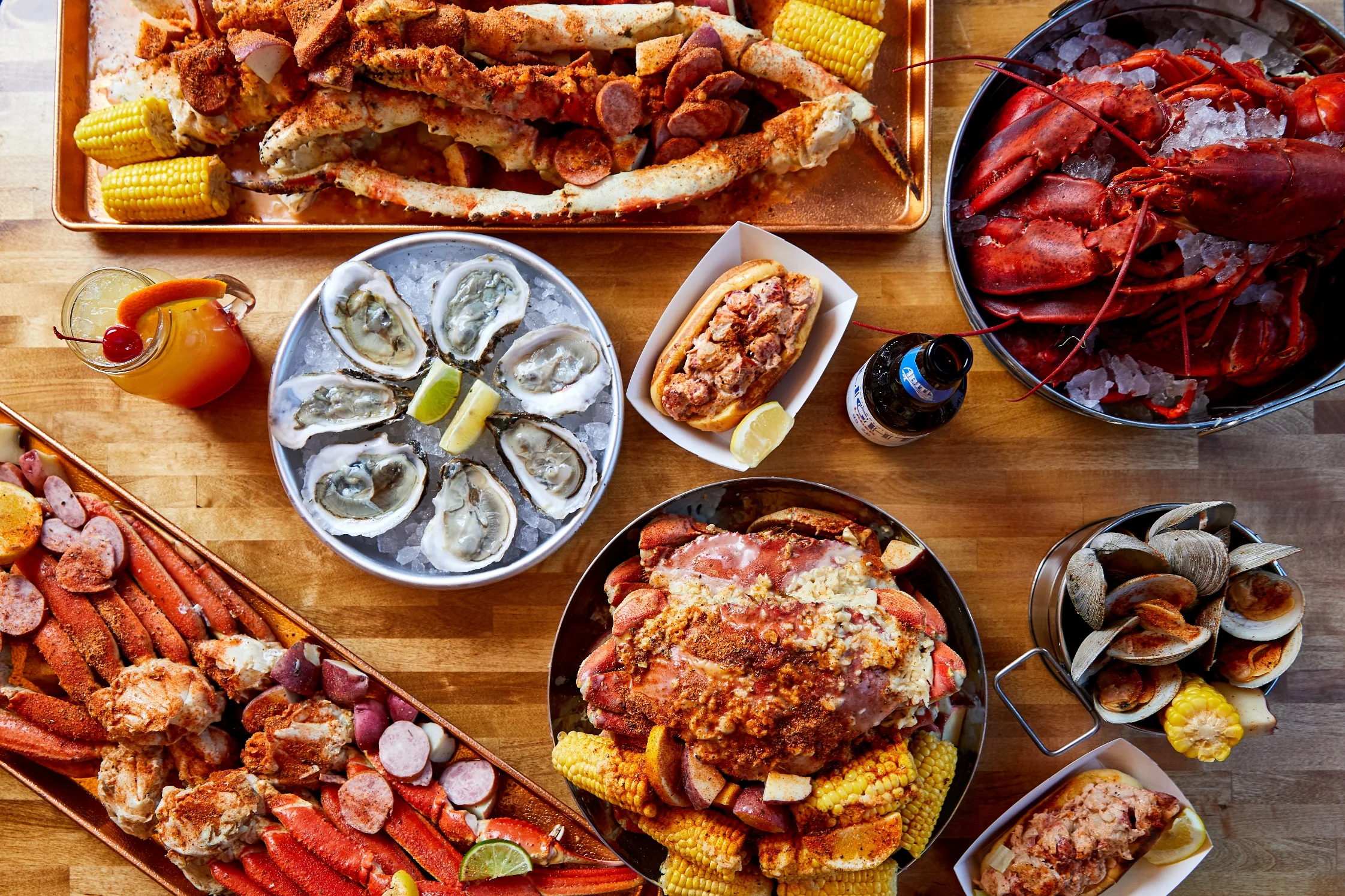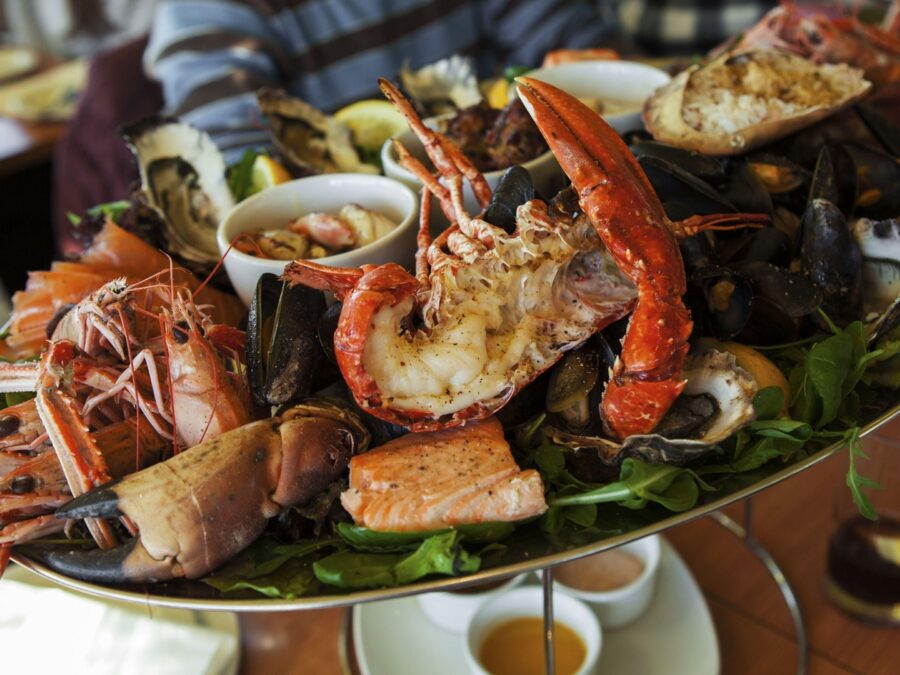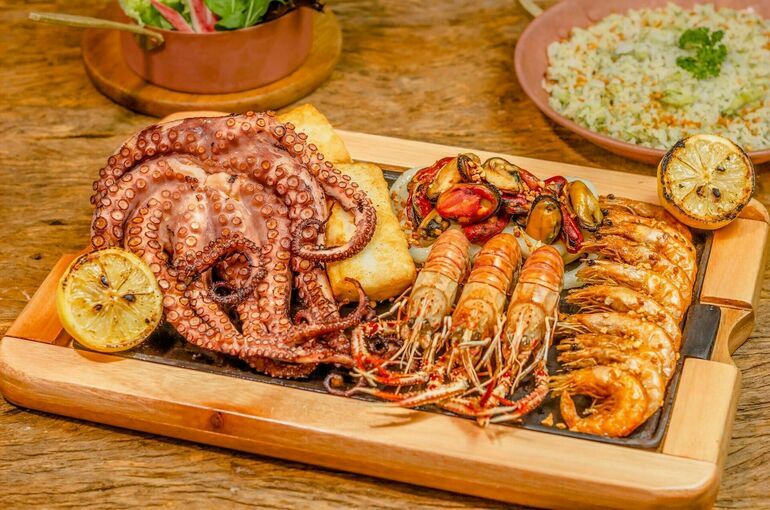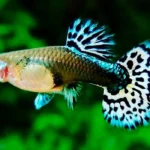A Taste Older Than Time
History of Seafood. Before there were cities, before there were empires, before there was even bread, there was seafood. The human connection to the sea goes back farther than memory, deeper than written history.
But the path from spears and hand-woven nets to tuna tartare and sushi bars is an odyssey to be savoured. History of Seafood Let’s cast off through time, from ancient seas to the plates of today.

First Encounters—Seafood in Prehistoric Times
Archaeological records inform us that our forefathers have been indulging in seafood for a minimum of 164,000 years. History of Seafood In southern African caves, scientists have found the remains of old shellfish banquets—mountains of discarded shells, charred fireplaces, and sea-stained stone tools.
History of Seafood For early Homo sapiens, seafood was not a luxury; it was a matter of survival. History of Seafood Living by the coast provided them with a dependable source of protein whenever inland hunting proved unfruitful. Shellfish were plentiful, simple to gather, and needed little equipment to gather.
Indeed, as some scientists think, seafood may have been pivotal in our evolution. Omega-3 fatty acids present in fish are considered to have helped with the quick evolution of the human brain that enabled us to become the planet’s most powerful species.
History of Seafood From such humble origins, man’s interaction with the sea slowly developed—not only for sustenance, but culture, ritual, and sociality.
Ancient Civilisations and the Cult of the Sea
As human societies expanded, so did their knowledge of seafood.
In ancient Egypt, fish were a mainstay of the commoners’ diet. Fishermen tossed nets off reed boats, hauling Nile perch, catfish, and tilapia out of the river. Wall paintings in tombs show scenes of fishing, gutting, and salting fish, stocking them for the afterlife.
The Phoenicians, master Mediterranean traders, perfected the technique of fish preservation. They salted sardines and mackerel and created early methods of shipping seafood over huge distances. Their key? A paste called garum, fermented fish sauce, was so popular among ancient cultures stretching from Greece to Rome.
Talking about the Romans, they elevated seafood fanaticism to a new dimension. The Roman elites built sophisticated fish ponds, called piscinae, to raise and display exotic fish. History of Seafood Exotic fish, such as moray eels, were status symbols, with many being kept more lovingly than domestic slaves.
Meanwhile, in ancient China, there is evidence that fish farming existed as far back as 3500 BCE. Carps were raised in rice paddies, producing an early example of sustainable aquaculture.
On the other side of the Pacific, indigenous Americans built complex fishing societies. History of Seafood The Pacific Northwest tribes constructed huge wooden traps to catch salmon on their spawning runs—an event not just practical, but deeply spiritual.
Seafood was no longer merely a dish. Seafood was a prop for economies, an inciting force of creativity, and an artistic subject of spiritual themes.

Middle Ages—Feast and Famine
By the Middle Ages, fish had become a common diet and religious ritual throughout Europe.
The Catholic Church had a huge influence on seafood eating at this time. Fasting regulations of the Church prohibited eating land animals on Fridays and some holy days, but fish was permitted. The history of Seafood created a thriving fish trade and some fuzzy interpretations of the regulations. (Did you know beavers were classed as fish for religious reasons in medieval France?)
Salt cod, or bacalhau, became standard fare throughout Europe, particularly in Portugal and Spain. Inexpensive, long-lasting, and packed with protein, it powered lengthy sea voyages and discovery.
Herring was referred to as the “silver of the sea” in Northern Europe. Herring fisheries made whole towns in the present-day Netherlands prosper. Smoked, salted, pickled—herring was consumed in any and every form.
In the meantime, oyster farming started to flourish in France and England. History of Seafood Oysters were not a luxury food item like they are now; they were a poor man’s food, piled high by the dozens onto plates.
The sea was both battleground and larder, delivering nourishment but also determining trade patterns, inciting war, and sculpting the fate of kingdoms.
The Age of Exploration—A New World of Tastes
The 16th and 15th centuries brought with them a seismic shift: the Age of Exploration.
European vessels set sail into uncharted waters, fueled by a desire for new commodities—and new seafood. The History of Seafood Explorers found unfamiliar crustaceans, molluscs, and fish, many of which they hastened to take home.
Cod became king. Newfoundland’s abundant fishing grounds came as a surprise to European nations. Salt cod returned to Europe by the ton, serving as a pillar of the Atlantic economy.
In Asia, Portuguese traders encountered the gourmet delights of Japanese seafood, the precursor forms of sushi and tempura.
And in South America, native foods such as ceviche—raw fish cured in citrus juices—opened up new flavour profiles that would charm the world centuries hence.
The history of Seafood was no longer local; it was global.

Seafood in the Industrial Revolution — Boom and Crisis
The Industrial Revolution transformed everything. Steamboats, mechanized fishing equipment, and eventually refrigeration revolutionised the fishing industry into a gigantic, worldwide operation.
Overfishing started to take its toll, particularly in the North Atlantic. Formerly plentiful fisheries experienced declining catches. Governments rushed to regulate catches, too often belatedly. Even so, the 19th century also saw some of the world’s best-loved seafood traditions develop — from New York City’s oyster bars to London’s fish and chip shops.
A New Wave — 20th Century Innovations and Global Cuisine
During the 20th century, seafood grew more international and more advanced than ever before.
World wars disrupted supply chains, but also stimulated the innovation of new preservation technologies. Following WWII, global trade networks re-opened, and suddenly Americans could consume Japanese sushi, Italians could have American lobster, and Australians could eat Thai prawns.
High-quality seafood also increased in status. Caviar was used as a symbol of wealth. French chefs refined the lobster thermidor. Sushi spread from Tokyo to Los Angeles to Paris.
But concerns about sustainability also increased. Infamous environmental catastrophes — such as the failure of the Newfoundland cod fishery in the 1990s—signaled the necessity for improved management. Aquaculture (fish farming) boomed, bringing new supplies of salmon, shrimp, tilapia, and others, but at some environmental expense.
Meanwhile, Vietnamese, Peruvian (consider ceviche!), Spanish (paella!), coastal cuisine, and more acquired worldwide popularity, making seafood an exciting component of world cuisine identity.
Seafood Today—Sustainability, Innovation, and Fusion
We eat everything from sea urchin to jellyfish, from Norwegian salmon to Indonesian sambal squid. Sushi is international. Seafood boils are social media darlings.
Scientists and chefs experiment with new choices such as farmed mussels, oyster reefs for reef repair, and even lab-grown seafood. While all this is happening, the fusion spirit characterizes contemporary seafood cuisine. Peruvian-Japanese Nikkei cuisine, Korean-Mexican fish tacos, Nordic-Japanese seafood smorgasbords — the fusions are limitless, tasty, and ever-changing.

Conclusion
The history of seafood is not merely a history of food evolution — it is the History of Seafood humankind. From the earliest prehistoric shell collectors who ventured into the surf to our master sushi chefs of the modern era, seafood has been a faithful companion on our walk through time. It nourished our forebears when they were brave enough to settle on rocky shores. It energised mighty civilisations and fueled world exploration.
It formed economies, cultures, religions, and holidays. In each shipment of salted cod, each oyster harvest, each fish market, and each holiday seafood banquet, echoes of time-honoured traditions continue to ripple. History of Seafood. And now that we peer into the future, the ocean, which has been freely shared for so long, cries out to be cared for. Overfishing, warming from climate, and pollution damage threaten the sea’s abundance. The next episode of seafood’s story will not be written arbitrarily — it will be written with our decisions.
We eat everything from sea urchin to jellyfish, from Norwegian salmon to Indonesian sambal squid. Sushi is international. Seafood boils are social media darlings.
Scientists and chefs experiment with new choices such as farmed mussels, oyster reefs for reef repair, and even lab-grown seafood. History of Seafood. While all this is happening, the fusion spirit characterises contemporary seafood cuisine. Peruvian-Japanese Nikkei cuisine, Korean-Mexican fish tacos, Nordic-Japanese seafood smorgasbords — the fusions are limitless, tasty, and ever-changing.
FAQs
When did humans first start eating seafood?
Humans started consuming seafood at least 165,000 years ago, according to coastal South African archaeological evidence.
How did ancient civilisations use seafood?
Civilizations including the Egyptians, Greeks, Romans, and Chinese enjoyed seafood as food intake, commerce, and even religiously. The Romans fermented fish into condiments like garum, the Egyptians dried fish to store, and the ancient Chinese cultivated carp in ponds.
What role did seafood play during the Middle Ages?
Seafood emerged as a key element in the Middle Ages, particularly due to the religious practices by Christians that made days of abstention from meat inevitable. Food sources such as pickled herring and salt cod became ordinary provisions throughout Europe.
Why was salt cod so important in history?
Salt cod had a shelf life without cold storage, providing for long sea travels and ocean trade. A mainstay among the diets in Europe, salt cod contributed toward colonising lands through cheap, dependable nutrients for pioneers and sailors.










